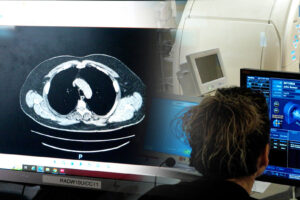In treating overdose patients, emergency rooms face challenge in detecting mix of drugs
Published on 8/21/18 in the Baltimore Sun
Patients who wind up in emergency rooms because of drug use have far more types of drugs in their systems than the standard screening test used by hospitals is catching, a new study has found.
While the drug epidemic has focused on opioid use, two-thirds of patients who ended up at two University of Maryland Medical System emergency rooms in 2016 had multiple drugs in their systems — up to six were found in some urine samples.
Emergency rooms tend to use a basic urine test that, like a pregnancy test, turns colors when it detects certain chemicals in drugs. The test is quick and inexpensive, but detects fewer than a dozen drugs, including opioids. The tests don’t detect drugs such as fentanyl and oxycodone, both of which have contributed to record overdoses across the country.
When urine samples from the Midtown Campus in Baltimore and the Prince George’s Hospital Center in Cheverly were sent to an outside lab for a more detailed urine test, more drugs were detected in patients than initially found at the hospital.
Knowing what drugs a patients has taken can help doctors better decide a course of immediate treatment, as well as follow-up treatment such as rehabilitation, said doctors from the two emergency rooms and researchers from the Center for Substance Abuse Research at the University of Maryland, College Park.
“We need to know the drug trends to know how to help people,” said Dr. Zachary D.W. Dezman, an attending physician in the emergency room at Midtown.
Urine samples were tested from 106 patients at Prince George’s and 69 from the Midtown campus. Patients in Baltimore tested positive mostly for marijuana and fentanyl, a highly potent synthetic often added to heroin without users knowing.
The hallucinogenic drug PCP was most detected in Prince George’s County.
The results highlight the complexities that exist in the current epidemic, said principal investigator Eric Wish, director of the Center for Substance Abuse Research. In some cases, dealers are mixing drugs without the knowledge of users. Many of the patients whose urine was tested misinformed doctors about what they had taken.
“It used to be didn’t want to admit what they were taking,” Wish said. “In this age they don’t know what they are taking.”
At the time of the study there was a spike in accidental drug overdoses from dangerous synthetic cannabinoids that go by the street names Spice or K2. But the urine samples did not detect much of the drug.



